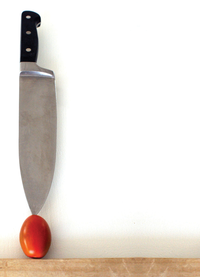Slice and Dice
For fast splicing and cool effects, you need a professional program. A flexible tool such as Flowblade would suffice.
|

©Kristian Kirk Milan, 123RF.com
For fast splicing and cool effects, you need a professional program. A flexible tool such as Flowblade would suffice.
Almost unnoticed by the public, Janne Liljeblad has been putting some time into making a very interesting editing program for videos. With the Flowblade tool, amateurs can quickly bring a vacation video into form, while professionals can create broad effects and animation based on the available functions.
Despite its slim size, the program provides more useful tools than many of its competitors. With Flowblade, you can arrange the clips on multiple tracks, create effects flexibly over so-called keyframes, and process numerous video formats. Even with this multitude of features, Flowblade provides a clear and uncluttered interface that simplifies getting on board. Somewhat more complicated, however, is the current installation of the Python software (see the "Installation" box).
After startup, a large main window will appear (Figure 1). In the upper left corner are a few tabs that provide numerous effects for video completion. To the right is a black preview screen at startup. The bottom of the window has the timeline for assembling the finished video.
[...]
Pages: 6
A correct choice in an editing program can save you a lot of headaches when working with video clips. We compare several applications to help you choose the tool that's right for you.
We compare seven free video editing programs, including Cinelerra, Flowblade, Kdenlive, Kino, Lightworks, LiVES, and Shotcut.
Bring your videos into the limelight and turn your recordings into minor works of art with the OpenShot editing tool.
In today's world, making a video clip using your smartphone or a low-cost digital camera is easy. The video editing programs Pitivi and OpenShot let you put together a film out of individual clips.
Video clip editors have been in short supply under Linux. Jonathan Thomas is now trying to fill that gap with the first stable version of the OpenShot Video Editor.
© 2026 Linux New Media USA, LLC – Legal Notice